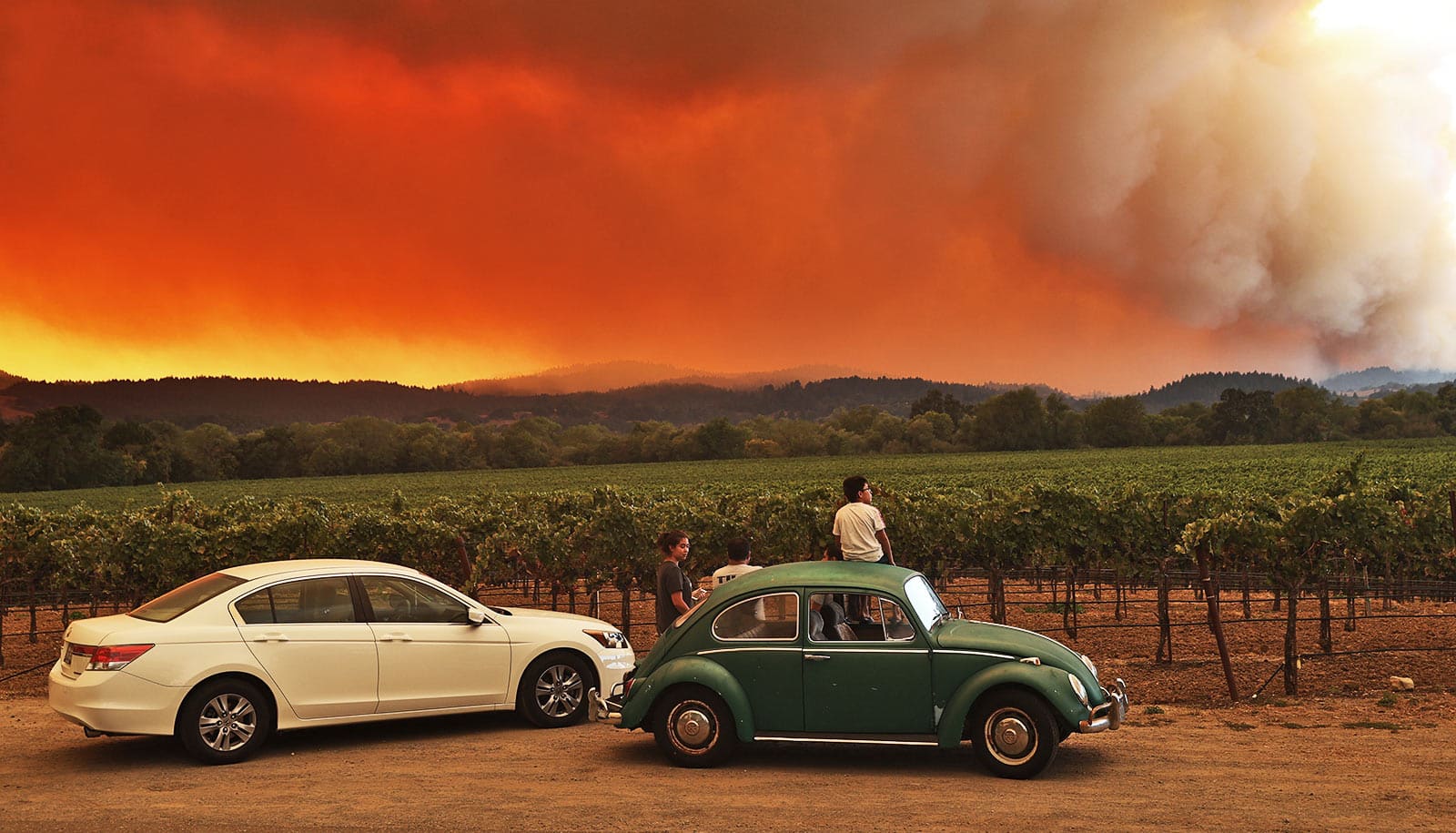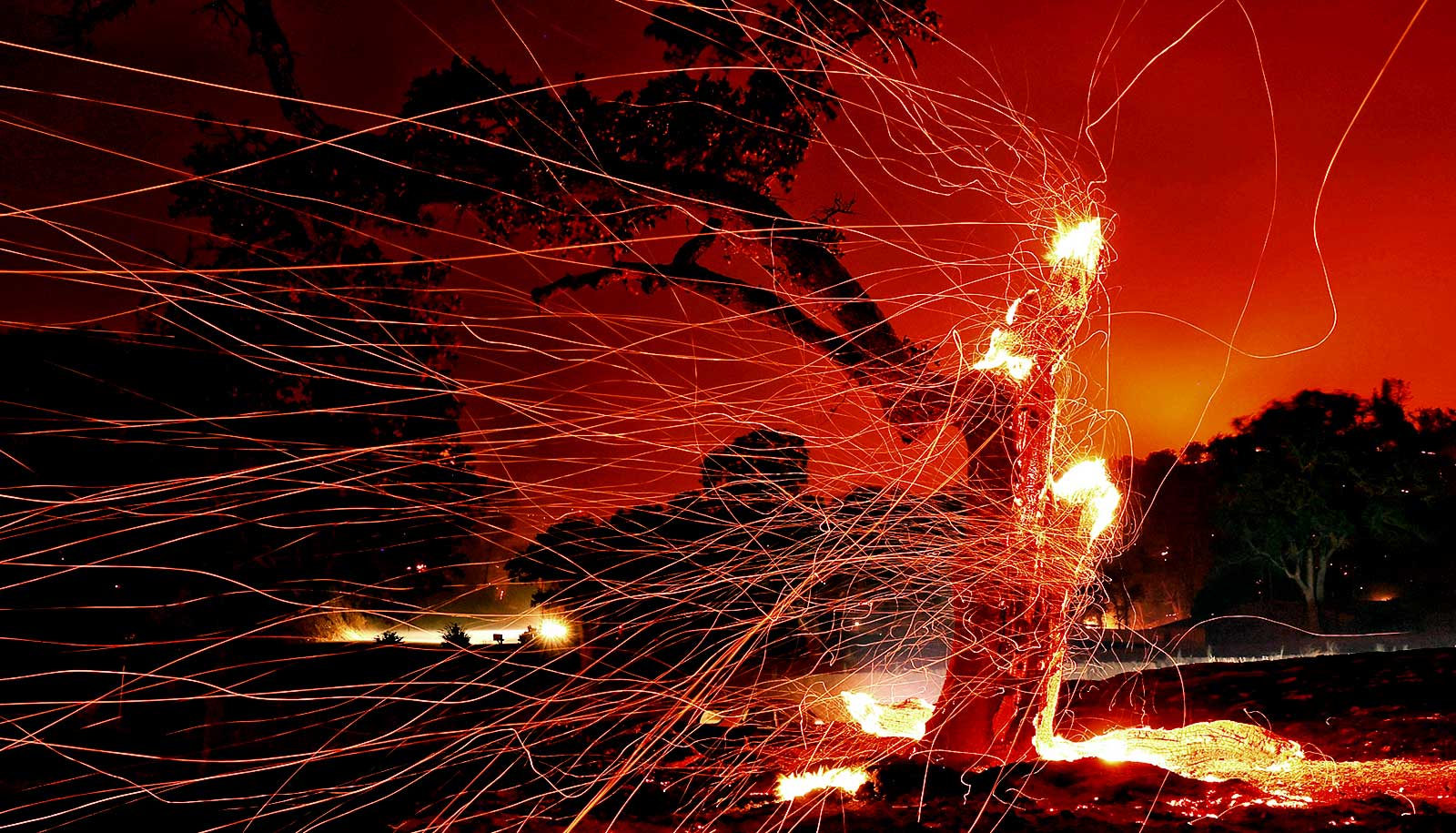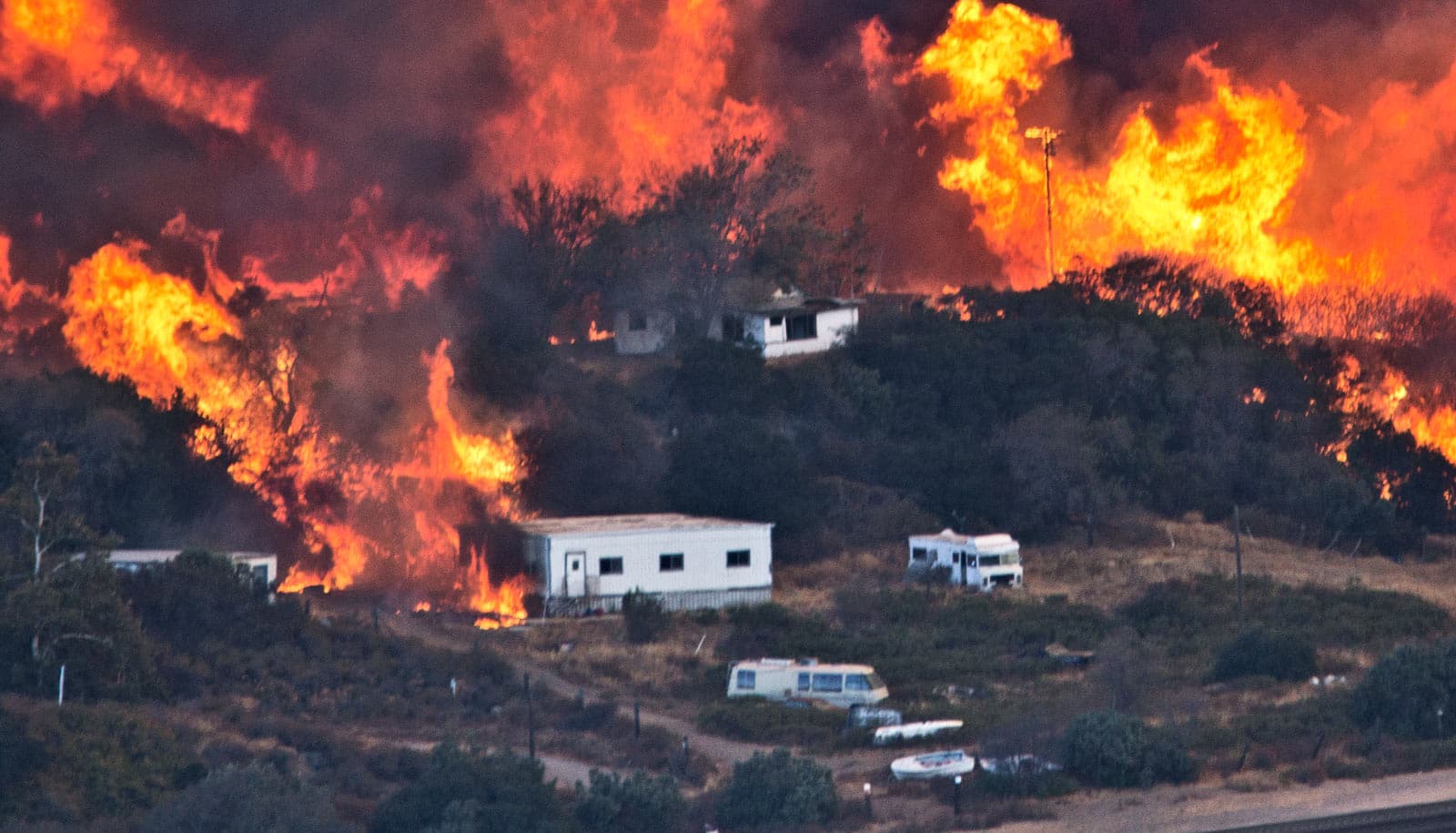While dry events in California are not getting drier, extreme wet weather events have steadily increased in magnitude since the middle of the last century, new research shows.
These increased extreme wet events can result in more dangerous flooding and also fuel wildfires.
“Most research after 2015 has been very focused on this climate variability and how it’s going to get worse in the future,” says Diana Zamora-Reyes, a graduate student in the department of hydrology and atmospheric sciences at the University of Arizona and lead author of the paper in the International Journal of Climatology.
“But, in this paper, the main takeaway is that this is happening right now, and that variability has been increasing for the past 50 years or so.”
California’s fires and floods
The team gathered data on seasonal precipitation and stream flow—the runoff that results from precipitation—throughout the state of California going back 80 years, which was when sufficient data began to be available.
There’s usually a lag between precipitation and stream flow because it takes time for snow to melt and water to wander through the landscape. Zamora-Reyes and her team focused on fall and winter data, since most precipitation in California occurs during those seasons.
“Going into this research, I thought that both wet events would get wetter and dry events would get drier, and that was what was causing the rise in variability,” Zamora-Reyes says. “I thought it would be both, but that wasn’t the case. My assumption was based on previous research that found there will be an increase in extreme precipitation events and they’re occurring in a smaller window of time.”
“California droughts are happening, our research just shows that they’re not caused by less precipitation,” says coauthor Valerie Trouet, a professor of dendrochronology in the Laboratory of Tree Ring Research. “We focused on precipitation and stream flow, which are not the only variables fueling drought. Temperature plays an important part as well, and with the world getting warmer, droughts are intensifying.”
The team—which also includes Bryan Black, an associate professor in the Laboratory of Tree-Ring Research—compared its findings from northern and southern California. These comparisons are important because southern California is home to most of the state’s population but northern California is where most of the water resources are located. Both regions rely on the water supply but in different ways.
“With this increase in variability and warming, it’s also important to consider that a lot of the precipitation is going to start falling as rain rather than snow,” Zamora-Reyes says.
This could mean more dramatic and destructive flooding, but it could also cause a surge in plant growth. If a dry year follows, that could result in more fuel for wildfires. Less snow also means less snowmelt, which usually doles out melted water at a less destructive pace.
“These patterns are going to keep causing billions in damage and are something we need to consider, especially for infrastructure planning,” Zamora-Reyes says.
Tree rings and precipitation
The researchers also found that precipitation variability is decreasing in the northern part of California in the fall.
“That’s where you get most of the water resources and also that’s where you have a lot of the forested areas,” Zamora-Reyes says. “We’re also seeing that less of these really wet events are coming in the fall, and instead we’re getting most of the precipitation concentrated in winter. We’re seeing this pattern across California. If you look statewide, you see the same trend in both precipitation and stream flow.”
The paper is unique because it highlights the relationship between the increasing variability in both stream flow and precipitation. “They’re completely independent records, yet they’re showing the same thing,” Zamora-Reyes says.
“Precipitation winds through complex processes before it ends up as stream flow,” Trouet says. “Stream flow is a much slower process, so we did not expect to also see that clear of a trend in variability in stream flow but we do.”
Zamora-Reyes was surprised by the team’s results.
“I was expecting to see an increase in variability over the last 20 years at most,” she says, “but we’ve been seeing a steady increase for much longer. People are noticing. I’ve talked to strangers about my research, and they say they’ve noticed what I’m talking about. It’s been interesting and eye-opening to see my research play out in real time.”
The researchers looked solely at data collected by sensors and instruments installed decades ago, but in the future Zamora-Reyes and Trouet want to use tree rings to study precipitation and stream flow variability going back hundreds of years.
Zamora-Reyes says that will help them answer questions such as: “How uncommon is this variability? Are there periods in the past comparable to what we’re experiencing right now?”
Source: University of Arizona



